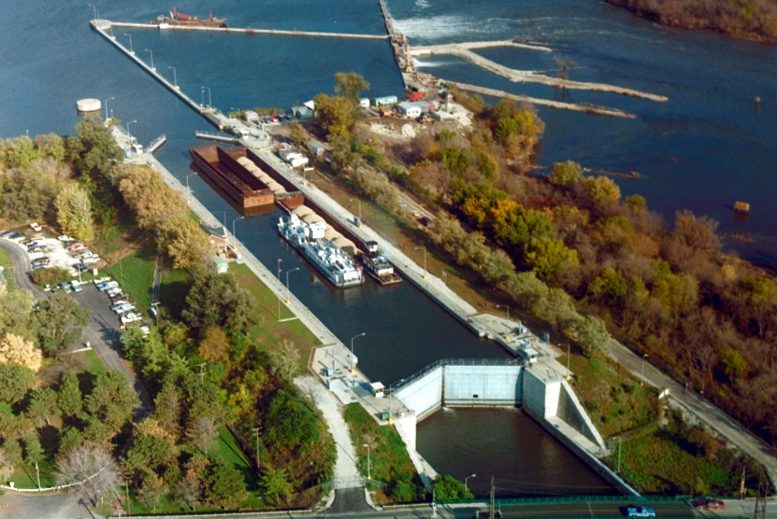From HOUSE DEMOCRATIC CAUCUS
State Reps. Kent Smith (D-Euclid), John Rogers (D-Mentor-on-the-Lake), Paula Hicks-Hudson (D-Toledo) and Mike Sheehy (D-Oregon)toured the critical Brandon Road Lock and Dam complex in Joliet, Illinois, on Friday with 25 other members of the Great Lakes-St. Lawrence Legislative Caucus. Brandon Road Lock and Dam is a critical choke point to keep Asian Carp out of the Great Lakes ecosystem.
Asian Carp is an invasive species that is on the brink of making its way into the Great Lakes, including Lake Erie. This particular species of fish poses a significant risk to the Great Lakes ecosystem as they are large, extremely prolific and consume massive amounts of food, which threatens population levels of native species such as walleye. If left unaddressed, the presence of Asian Carp will harm the Great Lakes region’s annual $7 billion sport and commercial fishing industry and $16 billion recreational boating industry.
“I’m grateful for the opportunity to see the multi-agency collaboration to protect not only Lake Erie, but the entire Great Lakes ecosystem from the dangerous, top-of-the-food-chain predators,” said Rep. Sheehy.
“We will either stop Asian Carp at the Brandon Road Lock, or we will wish we did,” said Rep. Smith. “Our Great Lakes and billions of dollars in economic activity hang in the balance. The longer we wait, the greater the threat of an ecosystem catastrophe.”
In 2014, The United States Army Corps of Engineers released the Great Lakes and Mississippi River Interbasin Study (GLMRIS) outlining a variety of plans to prevent the transfer of invasive species between the Great Lakes and Mississippi River watersheds. Following the release of the report, the Army Corps of Engineers commissioned an evaluation and plan to implement structural control technologies at the Brandon Road Lock and Dam in Joliet, Illinois.
“It’s important to learn the various ways to protect the Great Lakes from invasive species,” said Rep. Hicks-Hudson. “We need to work across the state and national borders to protect our greatest resource.”
To fully fund and support the plan, the United States Army Corps of Engineers will require congressional authorization of federal funding to complete their study and implement the project. The estimated cost for the facility is $831 million.
“In Ohio alone, Lake Erie is a vital economic engine—creating 100,000 tourism related jobs in Northern Ohio,” said Rep. Rogers. “As one of our nation’s greatest freshwater water resources, the lake not only provides drinking water for 3 million Ohioans, it is also responsible for generating $750 million in state and local taxes, attracting 1.5 million hunters and anglers who alone spend $2 billion in Ohio. If we don’t invest in Brandon Road now we risk a billion dollar fishing and water recreation industry that provides jobs across the entire Great Lakes region.”
The United States Army Corps of Engineers has bipartisan federal support for this project as both Democratic and Republican members of Congress are pushing for the completion of this study and project.


